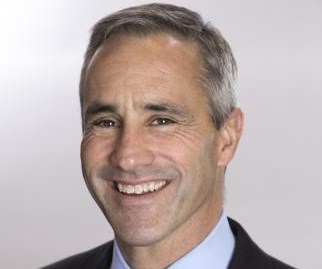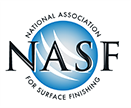NASF Update: Paycheck Protection Program
The National Association for Surface Finishing (NASF) explains the latest details of the legislative package for the Paycheck Protection Program (PPP) that would reportedly allow more flexibility for surface finishers to spend forgivable loans for payrolls and expenses.

Tom Sullivan, Vice President, Small Business Policy, U.S. Chamber of Commerce
The National Association for Surface Finishing (NASF, Washington, D.C.) will host a major “virtual” Washington Forum session Tuesday June 3 in response to legislative action by the House that would reportedly allow more flexibility for surface finishers and others to spend forgivable loans for payrolls and expenses from the Paycheck Protection Program (PPP).
The association will host Tom Sullivan, Vice President for Small Business Programs at the U.S. Chamber of Commerce, to walk through what the emerging changes mean, how companies may be affected, and how to navigate the program.
Tom brings unique insight to the PPP issue, as he’s been leading the nationwide small business effort through the U.S. Chamber to correct emerging problems with the program with the current Administration and Congress.
“We continue to work on this issue with Tom and the Chamber’s Small Business Council to ensure the program works for NASF members. An important ingredient in the mix is that our industry leaders have provided us such useful insights on the challenges they’ve faced applying for and using the PPP program,” says Christian Richter of The Policy Group from NASF headquarters in Washington.
The 417-1 House vote sends the measure to the Senate next week. House leaders championing the bill say urgent action is needed as the eight-week period when proceeds must be spent for loans to be forgiven will begin expiring tomorrow (Friday) for the first loan recipients after the Small Business Administration (SBA) opened the program April 3.
The House measure would give companies more time to spend the money — within 24 weeks or until the end of the year, whichever comes first — and still qualify to have their PPP loans forgiven. Businesses would also have up to five years, instead of two years, to repay any money owed on a loan and could use a greater percentage of proceeds on rent and other approved non-payroll expenses.
NASF members are urged to register for the association’s next “virtual” Washington Forum next Wednesday, June 3 at 1:00 pm – 3:00 pm ET. The session will focus on the latest details of the legislative package, the outlook for final passage and how businesses should factor in the action in their planning.

This post is courtesy of the Products Finishing and National Association for Surface Finishing (NASF) media partnership. Visit nasf.org.
Related Content
-
Possibilities From Electroplating 3D Printed Plastic Parts
Adding layers of nickel or copper to 3D printed polymer can impart desired properties such as electrical conductivity, EMI shielding, abrasion resistance and improved strength — approaching and even exceeding 3D printed metal, according to RePliForm.
-
Advantages to Pumped Eductor Agitation
Not all agitation methods are created equally. Pumped agitation with eductor nozzles can improve process tanks and quickly show a reduction in operating costs while keeping staff safe, following environmental legislation and preventing pollution.
-
How to Choose Between Sulfate and Chloride-Based Trivalent Chromium
There are several factors to consider when choosing between sulfate and chloride-based baths for trivalent chromium plating. Mark Schario of Columbia Chemical discusses the differences and what platers should keep in mind when evaluating options.
















